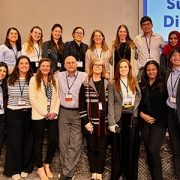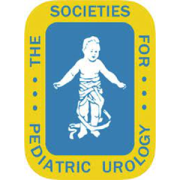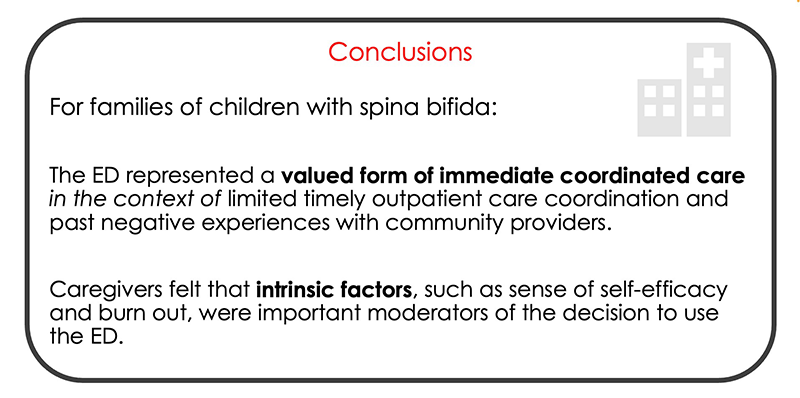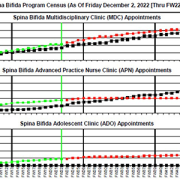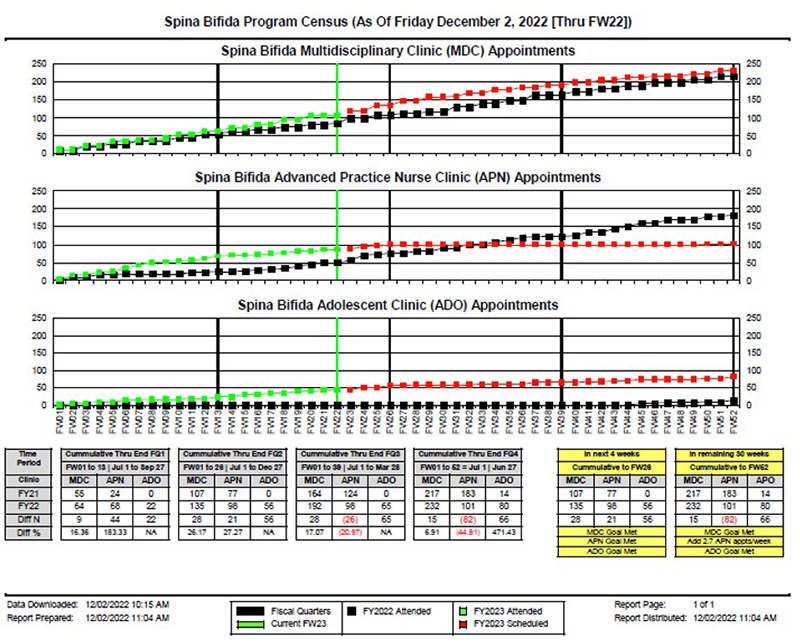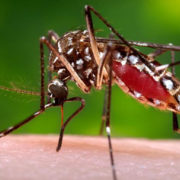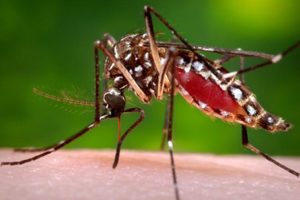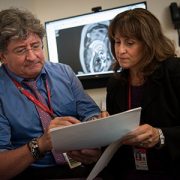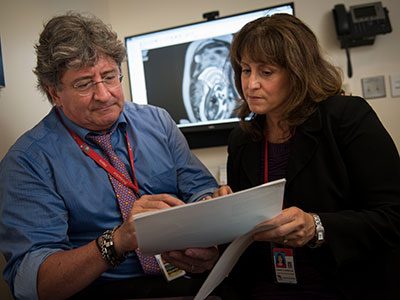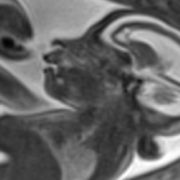Pediatric colorectal experts gather: 2024 PCPLC Conference
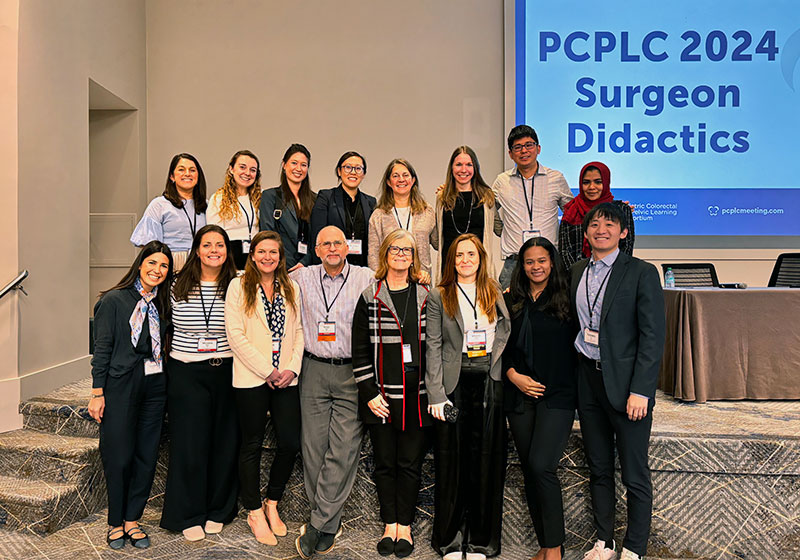
The Division of Colorectal & Pelvic Reconstruction team from Children’s National Hospital at the 2024 PLPLC Conference.
Medical professionals from across the world gathered in Atlanta, Georgia, for the 2024 Pediatric Colorectal and Pelvic Reconstruction Conference. This esteemed course, hosted by the Pediatric Colorectal and Pelvic Learning Consortium (PCPLC), provided comprehensive educational experiences to those caring for children with colorectal and pelvic disorders.
Children’s National Hospital staff showcased their expertise by leading in-depth discussions, presenting accepted abstracts and designing course programming across multiple specialty areas while highlighting the program’s focus on collaborative care. Led by Chief Marc Levitt, M.D., the division of Pediatric Colorectal and Pelvic Reconstruction is the first in the mid-Atlantic region to fully integrate surgery, urology, gynecology and gastroenterology into one cohesive program for children.
Presenters and topics from Children’s National included:
Course organizers:
- Marc Levitt, M.D., Education Committee member, Surgical Conference planner
- Briony Varda, M.D., M.P.H., Urology Committee chair, Cloaca Committee member, Documentation Committee member
- Andrea Badillo, M.D., Documentation Committee member, Education Committee member
- Julie Choueiki, M.S.N., R.N., Allied Health Care Professionals Conference (AHCP) co-chair

Dr. Marc Levitt leads a hands-on simulation lab using validated surgical models for treating Anorectal Malformations and Hirschsprung Disease.
Invited speakers and topics:
- Marc Levitt, M.D., Cloaca Advanced; Anorectal Malformations/Hirschsprung Disease Hands-On Course; Hirschsprung disease and Constipation
- Briony Varda, M.D., M.P.H., Genitourinary Complications & Creative Solutions: A Case Based Discussion of Patients with ARM; Cloaca Basics; Challenging Case Presentations in Colorectal Care
- Katherine Worst, N.P., CPNP-AC, Functional Constipation, Motility, Bowel Management Basics; Bowel Management of the Colorectal Patient Including Psychosocial Care and Pelvic Floor Physical Therapy; Cloaca Review Session for Allied Health Care Professionals
- Allison Mayhew, M.D., Genitourinary Complications & Creative Solutions: A Case Based Discussion of Patients with ARM; Advanced Cloaca; Cloaca Exstrophy, Gynecologic Evaluation and Follow Up
- Andrea Badillo, M.D., Functional Constipation, Motility, Bowel Management Basics; Genitourinary Complications & Creative Solutions: A Case Based Discussion of Patients with ARM; Pediatric Colorectal Knowledge Competition at Course Conclusion
- Christina Ho, M.D., Urological Care for the Colorectal Patient for Allied Health Care Professionals
- Meghan Mesa, B.S.N., R.N., C.P.N., Performing Colorectal Clinic Skills for Allied Health Care Professionals
- Justine Gagnon, B.S.N., R.N., Performing Colorectal Clinic Skills for Allied Health Care Professionals
Oral Plenary Scientific Session:
- Thomas Xu, Hospital Volume and Region Associated with Variation in Vacterl Screening Among Newborns with Anorectal Malformation An Opportunity to Optimize Screening Practices
- Kirsten Das, Gynecologic Anomalies in Patients with Anorectal Malformations and Associated Anomalies: A National Retrospective Cohort from 2016-2023
- Eugénie Lehembre-Shiah, Cloacal Malformation And Mullerian Agenesis: Management Of The Gynecologic Reconstruction For This Rare Situation
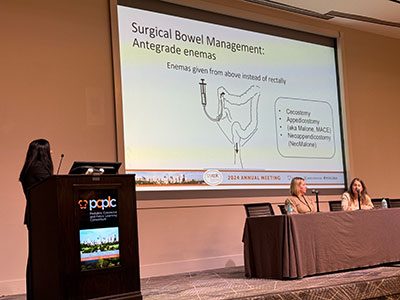
Dr. Andrea Badillo on the panel for Functional Constipation, Motility, Bowel Management Basics.
Scientific Poster “Oral Quick Shot” Session (abstracts accepted):
- Thomas Xu, Frequency of Vacte(G)Rls Associated Anomalies in Newborns with Anorectal Malformations Across Hospitals within the Pediatric Health Information Systems Database: Neonatal Diagnoses and Beyond; Malone Antegrade Continence Enema (Mace) – Reassessment of Complications with Advancements in Technique; Antegrade Continence Enemas for Patients with Spina Bifida to Treat Fecal Incontinence, a Comparison with Patients with Non-Neurogenic Causes
- Jessica McAuliffe, N.P., F.N.P., Frequency and Severity of Diaper Dermatitis in Children Following Stoma Closure
- Kirsten Das, Predicting The Need For Vaginal Augmentation In Patients Undergoing Cloacal Reconstruction
As a globally recognized expert in enhancing care of children with colorectal and pelvic reconstructive needs, Dr. Levitt, , along with Alejandra Vilanova-Sanchez, M.D., edited the textbook Pediatric Colorectal and Pelvic Reconstructive Surgery. As part of his commitment to advancing education about colorectal surgery, Dr. Levitt provided a copy of the textbook to every conference attendee.


